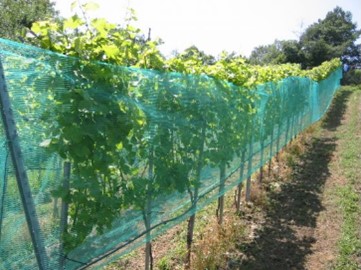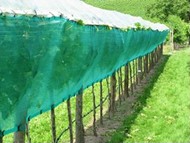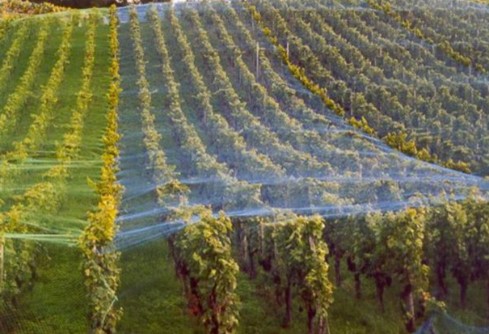How to install protective nets for vineyards?
Among the many aspects of viticulture, protecting grapes from birds and other pests is essential to ensure a quality harvest. Vineyard protection nets have become a key element in this protection strategy. In this article, we'll explore the benefits of installing protective netting on your vines and the different systems for installing vine protection netting.
1. Why install protective netting?

Protection against birds: Birds are one of the main threats to grapes and vines. They can cause serious damage to grapes by pecking at them, which reduces the harvest and can affect fruit quality. Protective netting prevents birds from gaining access to the grapes.
Insect prevention: Protective netting can also act as a physical barrier against insect pests such as wasps, fruit flies and other pests that can damage grapes.
Reduced harvest losses: By preventing birds, insects and other animals from eating the grapes, protective netting helps reduce harvest losses. This means you can harvest a greater quantity of higher-quality grapes.
Environmentally-friendly: Using protective netting can help reduce the need to use chemicals to control pests, which benefits the environment by reducing pollution and adverse impacts on non-target wildlife.
Durability: Protective netting can be reused for several seasons, making it a lasting investment for the protection of your vines.
2. Different installation systems: on the row vs. above the row

Materials required:
Side protection net for grapes.
Steps:
Choose the right time: The protective netting should be installed before the grapes start to ripen, to prevent birds from nibbling them.
Measure the area: Determine the size of the area you wish to protect with the net. Measure the length and height of the vine and add a little margin to ensure that the net will completely cover the grapes.
Lay the net: Unfold the protective net and place it on the vines on either side of the row. Make sure that the net covers the vines completely and that there are no gaps through which birds can pass.
Fasten the net: Use a stapler or hook-and-loop fastener to secure the 2 protective nets together. Make sure the net is taut to avoid sagging on the grapes.
Installing protective netting over the vines is similar to using protective netting to cover the sides of the vines. However, in this case, you'll be creating a support structure above the vine to suspend the netting. Here are the steps to follow:

Protective netting for the grapes.
Metal or woodenposts for the support structure.
Heavy-dutywire or nylon.
Stapler or cable ties.
Possibly ropes or turnbuckles to keep the net taut.
Steps:
Choose the right time: As with the installation of side netting, installation over the vines should be carried out before the grapes begin to ripen.
Determine the required height: Measure the height of your vineyard to determine the required height of the support structure. Make sure that the structure is high enough to prevent the net from touching the vines.
Install the posts: Plant metal or wooden posts on either side of the row of vines you wish to protect. Space the posts evenly along the row.
Attach wire or nylon: Use heavy-duty wire or nylon to create a roof-like structure over the vines. Attach it securely to the posts to form a lattice structure.
Lay the netting: Unfold the protective netting and place it over the structure you've created, so as to completely cover the row of vines. Make sure there's enough netting to cover the entire length of the row.
Attach the netting: Use a stapler or cable ties to secure the protective netting to the frame you've built. Make sure the net is taut so it doesn't sag on the vines.
Optional: If necessary, use ropes or turnbuckles to keep the net taut over the vines.
For both types of installation, during the vine-growing season, check the net regularly to make sure it's in good condition and has no holes through which birds can penetrate.
By following these steps, you should be able to install a protective net on the side or top of your vines to protect them from birds and other pests. Don't forget to remove the netting once the season is over, to allow the vines to develop properly.
In conclusion, installing protective netting on a vineyard is a common and effective practice for preserving the harvest, improving grape quality and reducing losses caused by birds, insects and other pests. This contributes to maintaining quality grape production while being both environmentally friendly and economically advantageous.
On this page, you'll find all our nets for protection against birds, insects and hail, as well as harvest and shade nets, and climate nets.
Because our customers' opinions count for so much, here's what François Van Pachtenbeke (Belgium) has to say:
"I'm very satisfied with the quality of our nets. Wind resistance is excellent, and the strong point is undoubtedly the reinforced edges with regular eyelets for fastening. The ties offered with these nets hold well, but are a little hard to place. "



